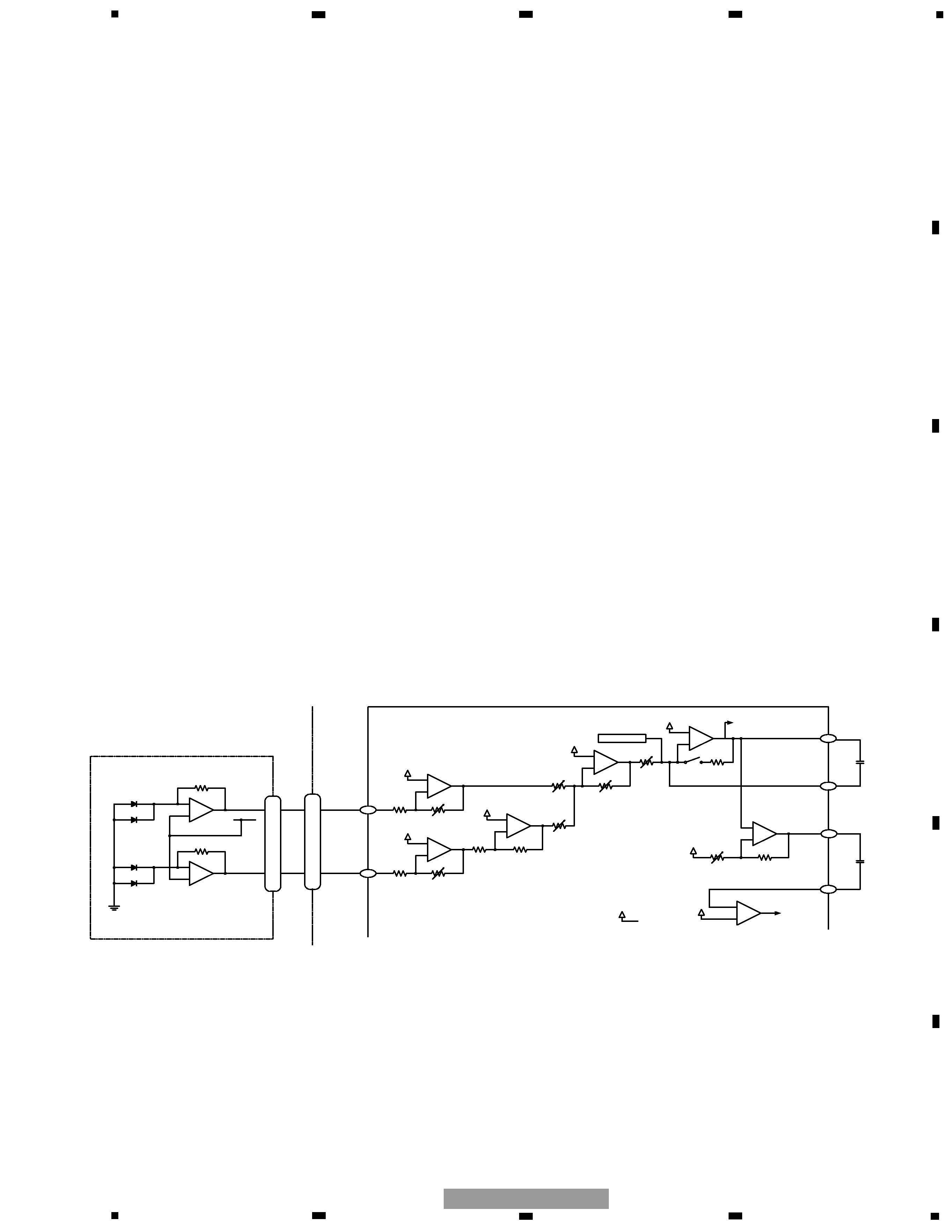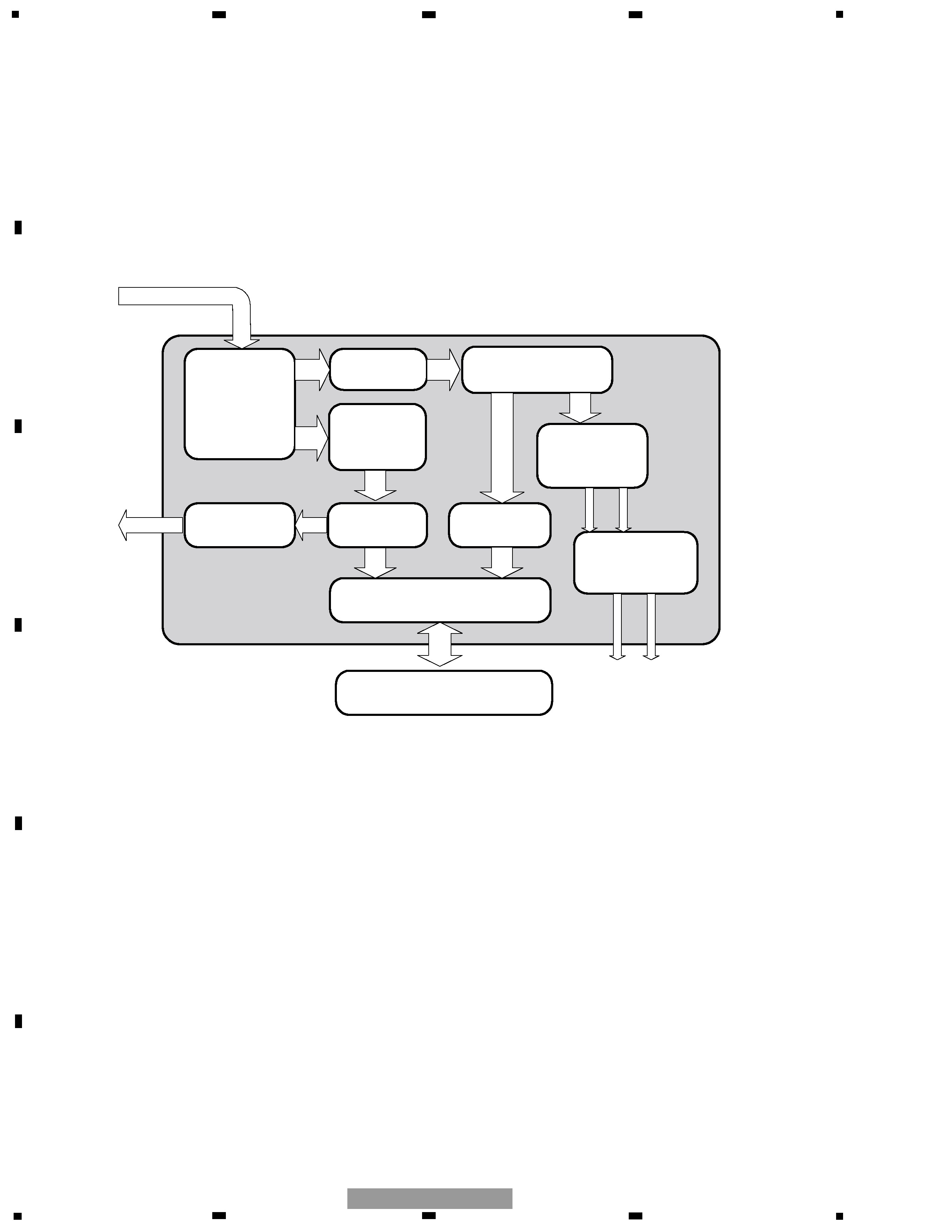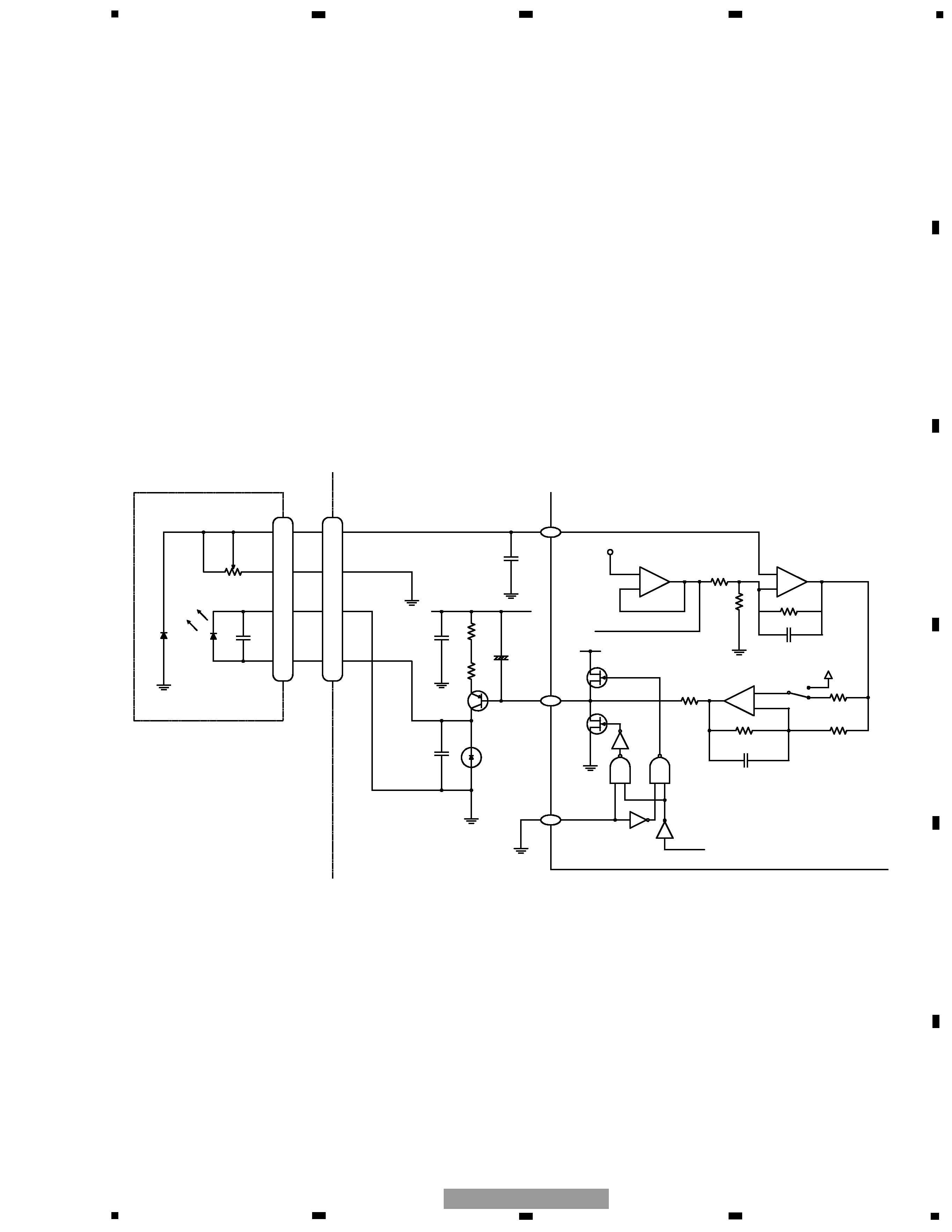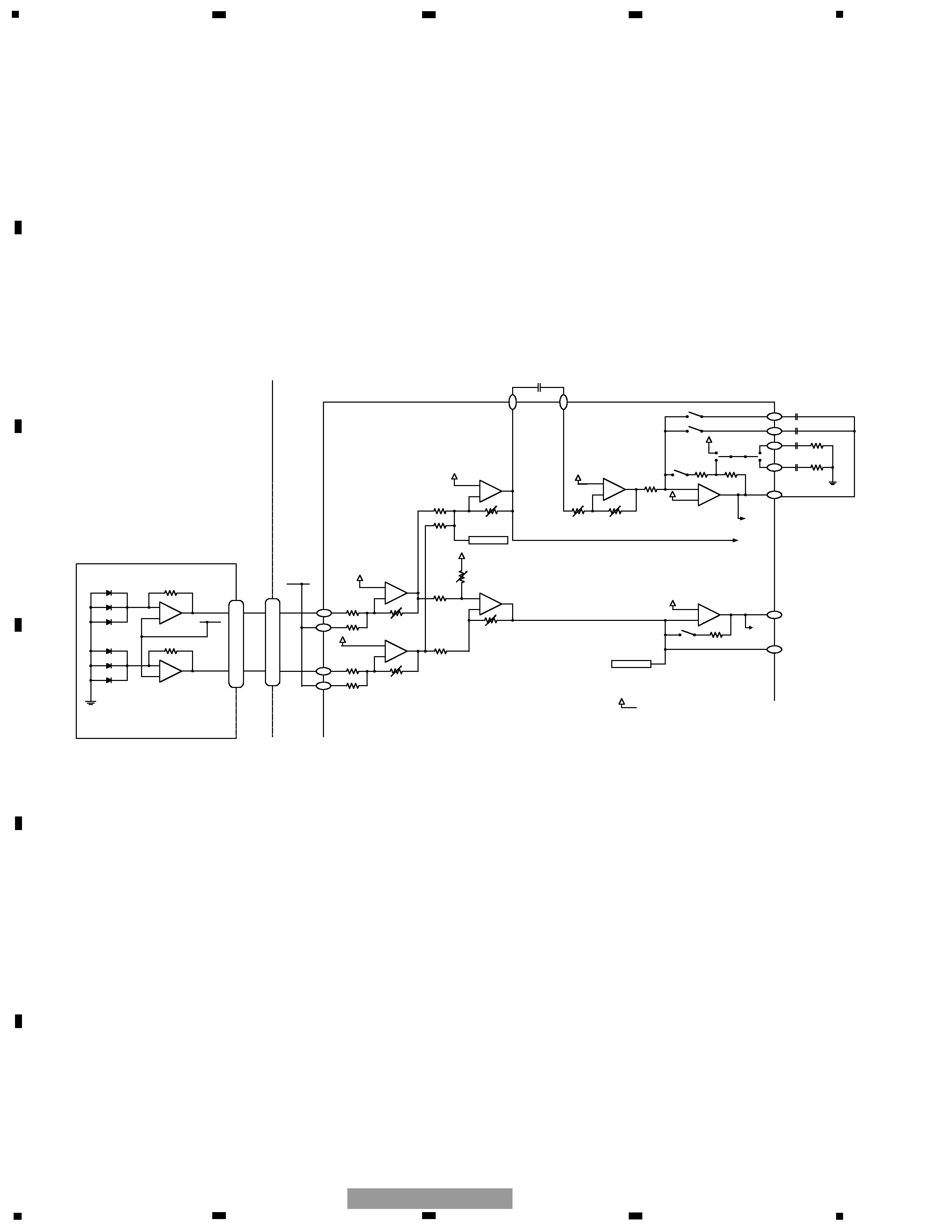
5
5
6
7
8
F
E
D
C
B
A
5
6
7
8
CX-3026/E
1.1.3 Focus error amplifier
The photo-detector outputs (A + C) and (B + D) are applied to the differential amplifier and the error amplifier to obtain
the (A + C - B - D) signal, which is then provided from the pin 93 as the FE signal.
The low frequency component of the FE voltage is:
FE = (A + C - B - D) x 8.8k/10k x 111k/61k x 160k/72k
= (A + C - B - D) x 3.55
The FE output shows 1.5Vp-p S-shaped curve based on the REFO. For the next-stage amplifiers, the cutoff frequency
is 14.6kHz.
1.1.4 RFOK
The RFOK circuit generates the RFOK signal, which indicates focus-close timing and focus-close status during the play
mode, and outputs from the pin 6. This signal is shifted to "H" when the focus is closed and during the play mode.
The DC level of the RFI signal is peak-held in the digital block and compared with a certain threshold level to generate
the RFOK signal. Therefore, even on a non-pit area or a mirror-surface area of a disc, the RFOK becomes "H" and the
focus is closed.
This RFOK signal is also applied to the microcomputer via the low-pass filer as the FOK signal, which is used for pro-
tection and RF amplifier gain switching.
1.1.5 Tracking error amplifier
The photo-detector outputs E and F are applied to the differential amplifier and the error amplifier to obtain the (E - F)
signal, and then provided from the pin 96 as the TE signal.
The low frequency component of the TE voltage is:
TEO = (E - F) x 63k/112k x 160k/160k x 181k/45.4k x 160k/80k
= (E - F) x 4.48
The TE output provides the TE waveform of about 1.16Vp-p based on the REFO. For the next-stage amplifiers, the cut-
off frequency is 21.1kHz.
Fig. 1.1.3 TE
11
9
E
F
VREF
11
9
112 k
112 k
63 k
45.4 k
63 k
160 k
160 k
45.4 k
161 k
80 k
160 k
60 k
20 k
87
86
TE A/D
Pickup Unit(P10)
P5
P10
P1
P6
E
F
UPD63712GC
CD CORE UNIT(S10)
+
-
+
-
+
-
+
-
+
-
+
-
-
+
VREF
TEO
TE-
TEC
TE2
96
95
97
98
33 p
R1
Inside TEC
TEOFF setup












